Would a sailboat be an option for us? Sailboats are used routinely to do circumnavigations and there are a plenty of choices. So we started to look at sailboat options. We used a similar list of requirements that we did for motorboats. Helsinki, Düsseldorf and Southampton boat shows all featured plenty of different sailboats and we took a lot of notes and made comparisons.
After running around the boat shows and exploring different brand sailboats we noticed that yachts made in serial production in France and Germany are rather similar. In large series boats are made cost effectively but on the other hand their personality and even comfortability suffer. But their price of course is much more reasonable.
We studied among the others the yachts with a length approx. 40 feet from the following brands: Bavaria, Beneteau, Jeanneau, X-Yachts, Saare, Hanse and Moody. All of them had theirs own charm but for one or another reason they did not felt our boat. In most of the production boats the main problem was that there was very little or not at all any possibilities to make changes into the layout so we could be comfortable with her.
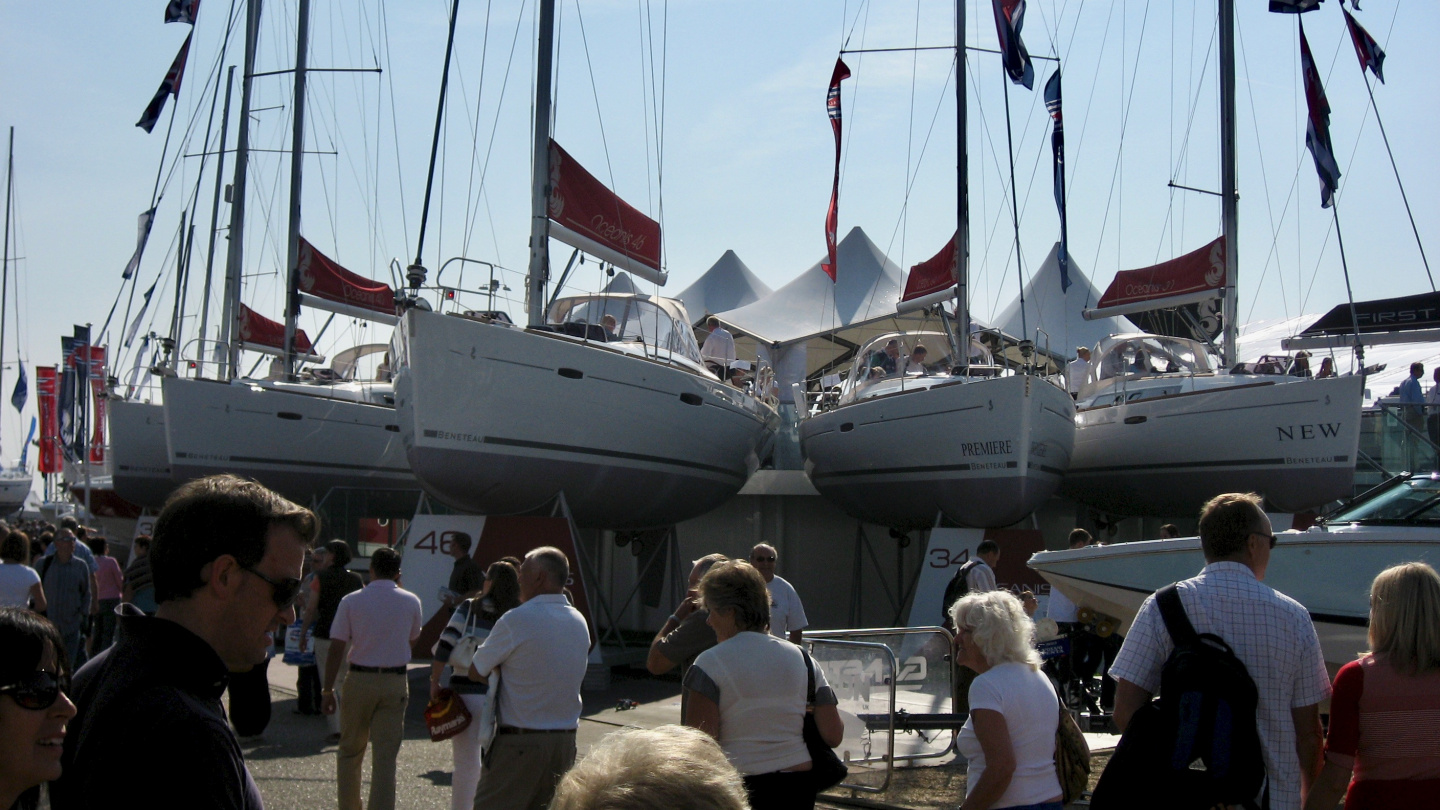
We got more acquainted with Bavaria during our sailing course in 2009 December in Tenerife. We had Bavaria 51 cruiser as our training boat and our instructor was Erkki Salonen from Wilhelmina Sailing Ltd. During the week we had a lot of discussions with Erkki about what we should consider in our new Suwena. We thought about requirements what our cruising area brings and about limitations of our crew size. We pondered about options in rigging, possible sail combinations, number of winches and other equipments.
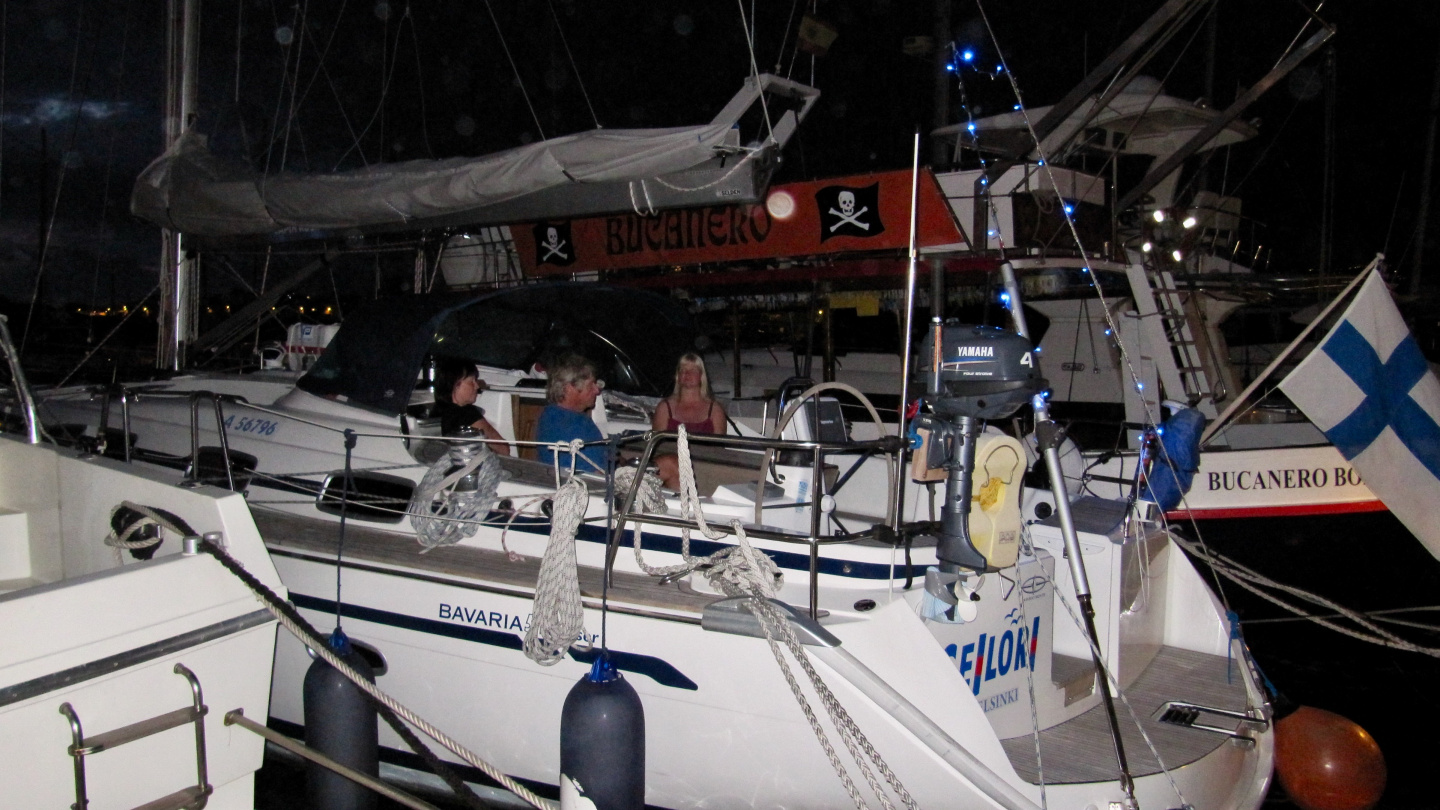
At the same time with theory we got used to work on sailboat deck both in harbours and on ocean swell as well. During this we found for example that handling a spinnaker with so small crew may not be successful.
We also had some rough conditions when the wind picked up and rose to 18 m/s with the waves being almost 4 meters at the time. It made us to think about what kind of equipment we need for surviving in storm by two of us only. The course boat had traditional mainsail. We noticed that in good conditions the handling was not a problem but in more windy situations mainsail with furling system would be better for us.
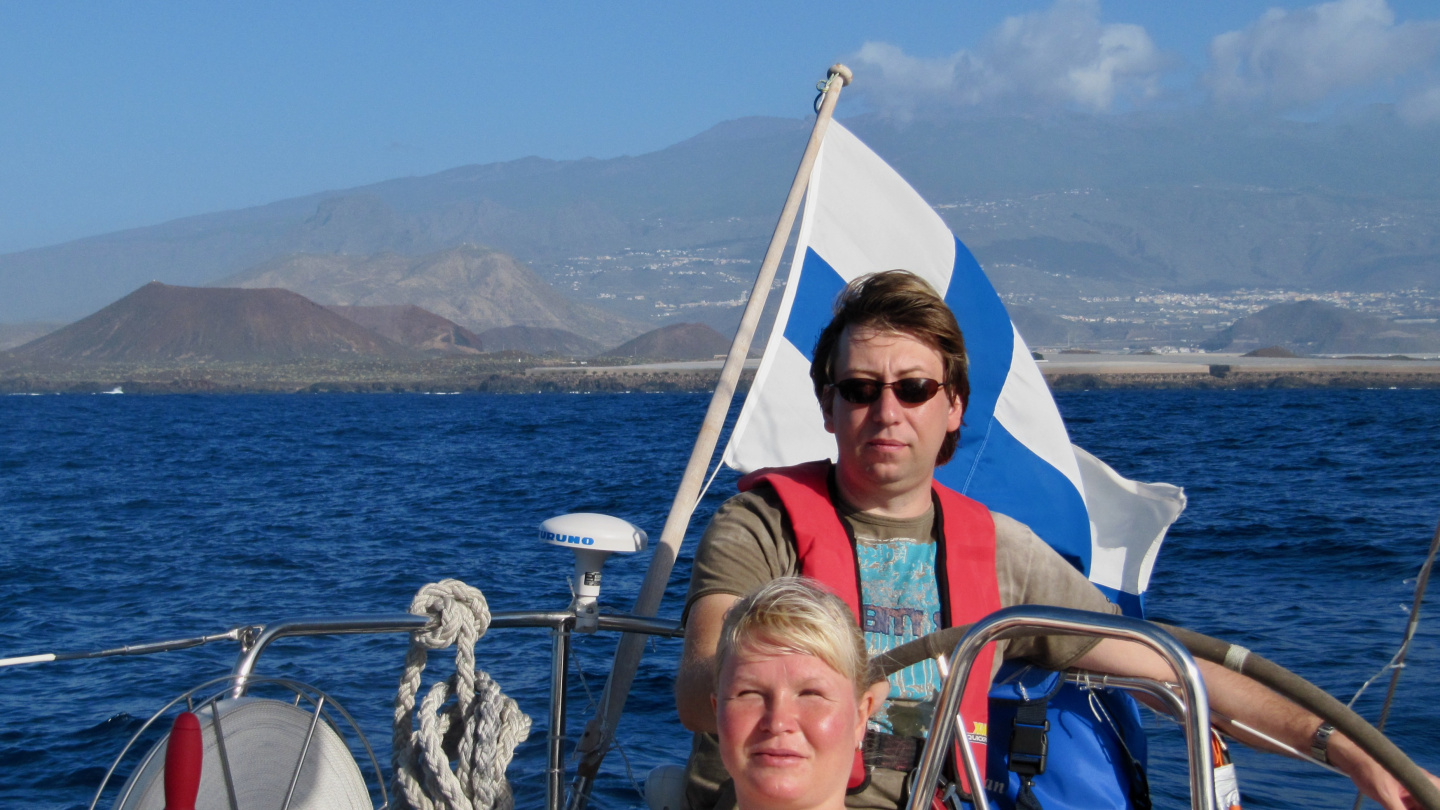
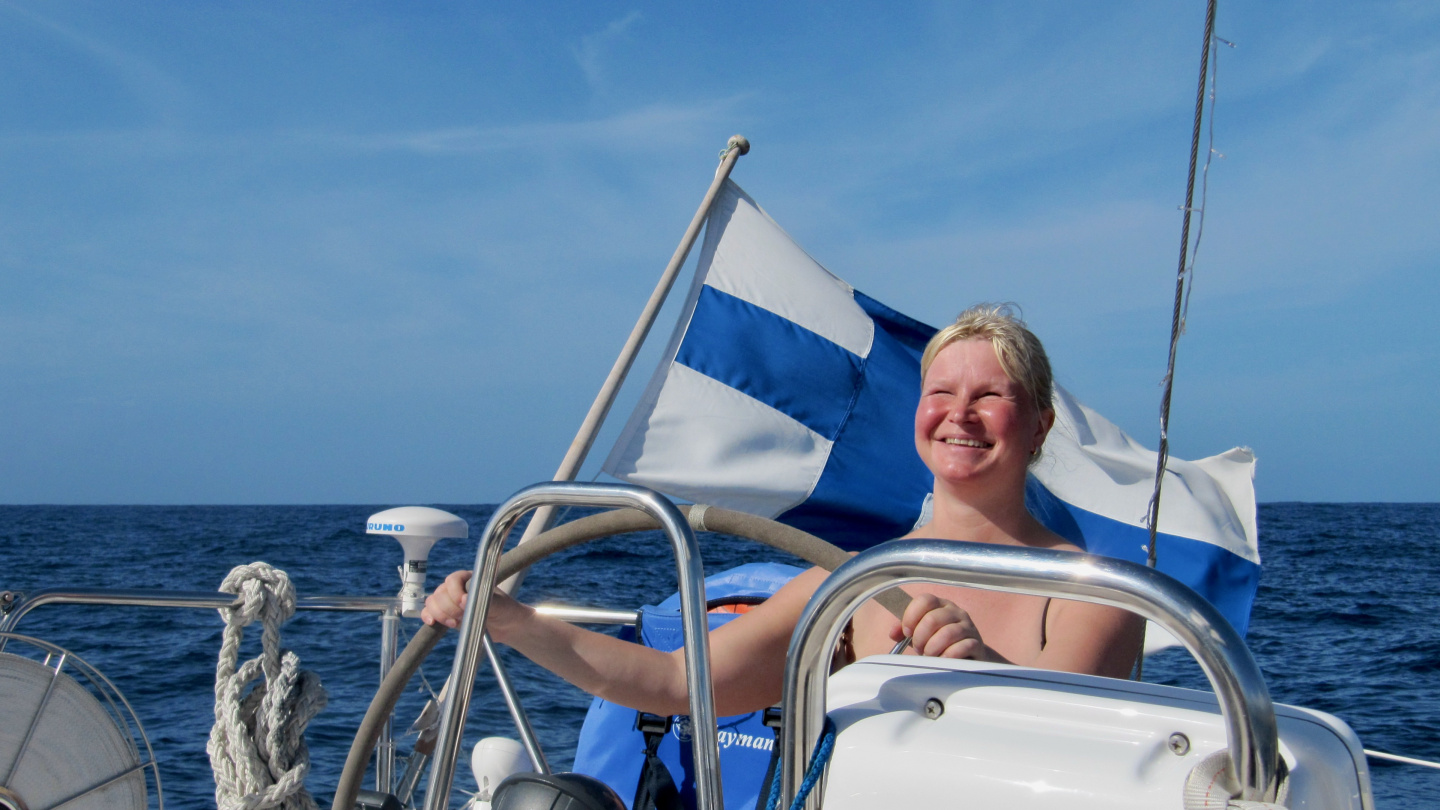
It looks like electricity and electrical systems are a headache in most of the boats. As an entrepreneurs we are very tied to our companies. Even during our summer cruise we have to do some work. At worst this means that two laptops are being run full time. Therefore one big requirement for a new Suwena is the electric system. We have followed many sailors and their sailboats. The electrical problems seem to be more rule than the exception. Batteries are empty and there are not enough power for chartplotter or radar. Our future boat’s electrical system must be designed to handle large continuous loads and that is not very typical for a sailboat.
We would like to get a boat with the length of at least 40 feet, so she will be our home also on our longer voyages in the future. But the bigger boats tend to have more cabins than we really need and most sailboat manufacturers do not allow any changes in boat’s layout. We understand the need for cabins in case the boats are used in competitions and there are a plenty of crew to fine tune the sails. These boats are also used as charter yachts and then bigger number of cabins are needed. However we plan to travel with just two of us as a crew. In addition Eve’s blindness reduces our operating possibilities and the boat should be safe and fully handleable with the crew of “one and a half” persons.
As there is a limited crew we need to make many things in a different way and thus we think that inside helm station gives us more opportunities to operate the boat. However inside helms are not common among the sailboats. We did not like the lifelines that most sailboats use as a railings. Maybe that is because our current Suwena has really good and strong stainless steel tube railings that also gives additional safety element to Eve.
On the boat shows we were visiting in several sailboats which had squeaks and groans in their hulls when children run on a deck. Even if these boats are designed for blue water sailing we are not willing to take our souls in this kind of a boat into the middle of the ocean. Our current Suwena’s hull is very strong, bottom thickness is 20 mm of solid laminate and there have never been any creepy sounds. We would like also our new boat to feature the hull made of solid laminate. Whenever we found the yacht made with the sold laminate hull she had a layout not pleasing us and no possibility to make customizations.
At some point we thought about catamaran as one option and went to see the Lagoons in Southampton Boat Show. Additionally in Merikarvia we had a Lagoon catamaran Kaljuska as our neighbour. Kaljuska’s owners were happy to present their boat to us and we learned about differences, benefits and disadvantages between catamarans and monohulls. However catamaran’s width limits its usage and therefore catamaran did not feel like our boat.
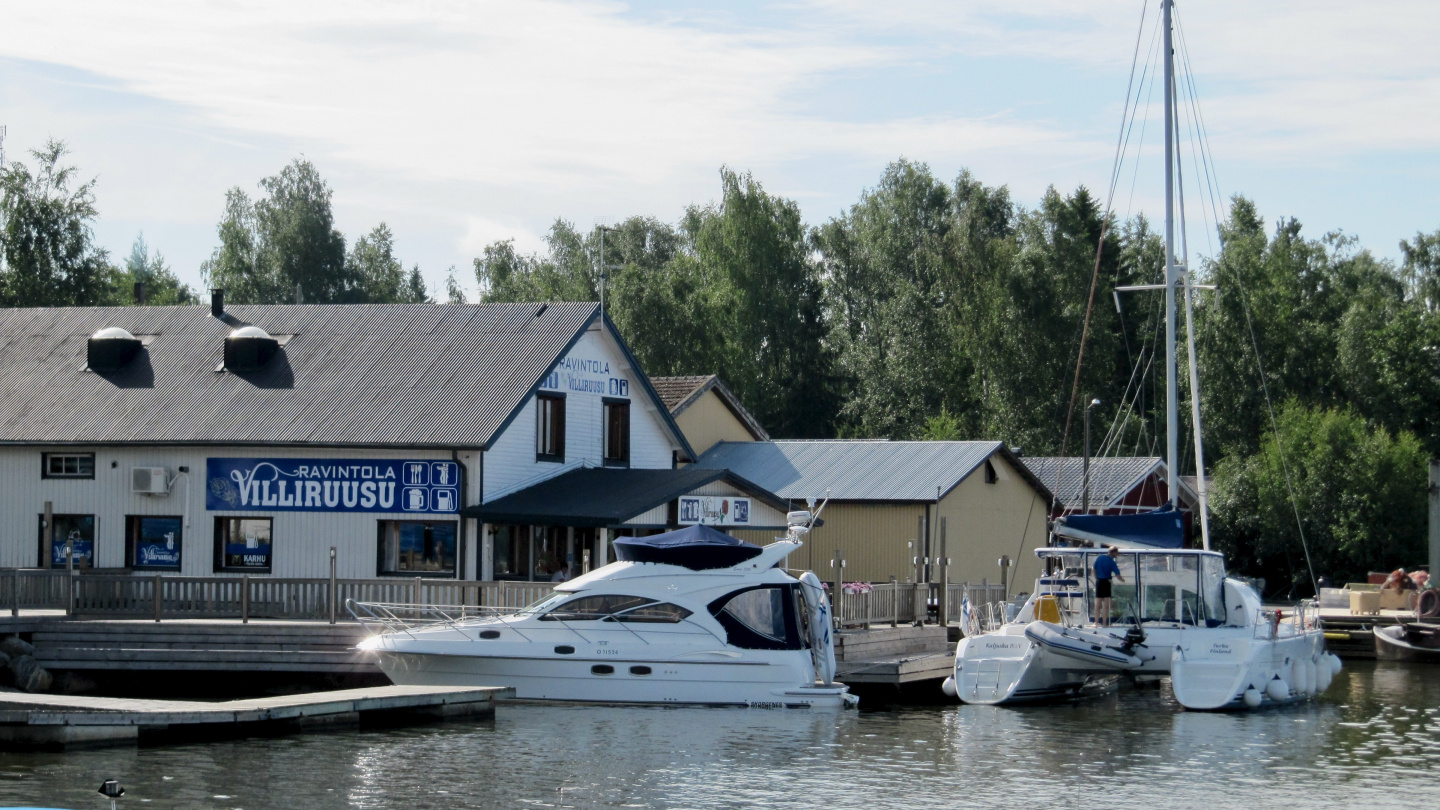
It looked like we do not find a sailboat for us until we run into Nauticat yachts. In discussions with the boatyard we found immediately solutions to all our requirements. Their range included several options that could be potentionally customized as our boat. Nauticat’s philosophy is that for each customer they will build a boat to his needs. Each Nauticat is built fully with one-off principle and therefore there are no two same looking Nauticats in the world.
We got so exited about Nauticats in Helsinki floating boat show that we spend one complete day aboard one of their yachts, being a “troublemaker” and asking all kind of questions. We studied Nauticat yacht options thoroughly both in the boat show and later in the boatyard after which we chose the pilothouse sailboat 42 and traditional motorsailer 441 as options to continue the negotiations.
Stop the press!
Nauticat 441 is the CE B-category boat and we have a dream to cross the oceans one day. Nauticat Yachts Ltd managing director Kaj Gustafsson told that “CE B-classification is due to EU certification requirements that count side doors as the downflood opening. Even thou the 441’s aluminium frame doors are watertight enough EU officials speculate that a crew member may forget the door open and the doorstep will be thus counted as a downflood opening. The whole yacht is however designed and built fully according to the CE category A requirements. In other countries like Japan, Nauticat 441 is approved as an ocean capable yacht.”
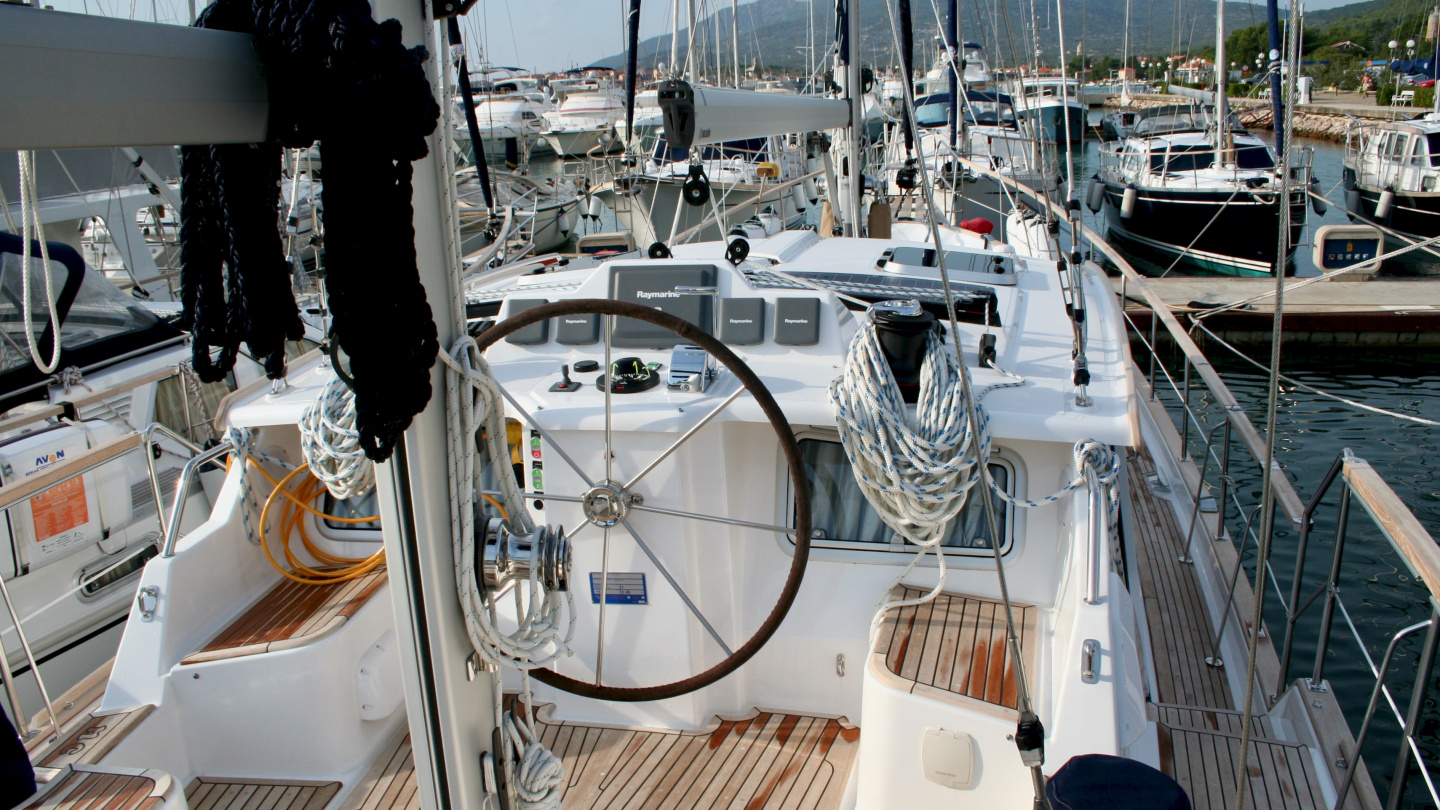
From the first sight we were fascinated by how comfortable and liveable Nauticat interior feels. Plastic moulded surfaces are not visible from anywhere. Interior is designed and made with good taste and professionalism. The hull is solid laminate and it made absolutely no sound even the other customers went in and out all the day in the fair. And as a last thing, Nauticats are made here in Finland and Finnish quality craftsmanship is very well known all around the world.
We got strongly interested in Nauticats and asked for an offer for the both of 42 and 441 models and agreed upon a seatrial.
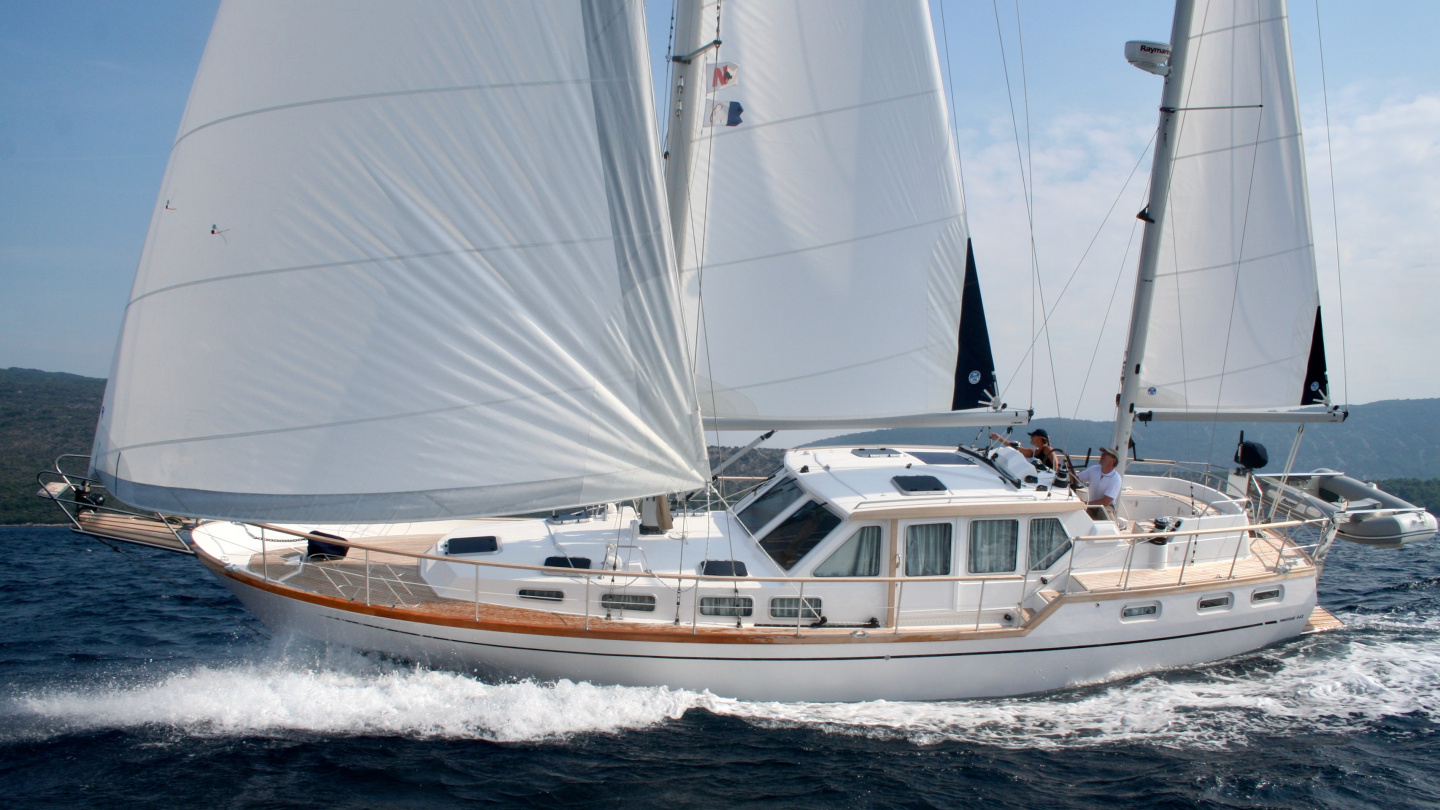
We noticed that we found two yachts made with very different idealogical principle: Nordhavn and Nauticat. However the both of them shared a good deal of similarities. Nordhavn is like a miniature ship and Nauticat, especially as a ketch, is like a small sail ship. Other similarities are:
- hull made from solid laminte
- the both yachts are customized for customer needs
- all around the boat the very strong parts are used even starting from door hinges
- the both yachts have internal and external helmstation and the both helms can actually be used
- similar level of comfort: full kitchen with plenty of cold space, 2 cabins, 2 heads, separate shower, very nice full teak interior and tremendous amount of storage space
- two separate power sources
Nordhavn: main engine and get-home wing engine
Nauticat: sails and engine - similar size engine power
- well designed electric system that can handle large continuous loads
- generator is placed in a way that a maintenance is possible
- despite the big size and mass of the boat, both of them can be handled by a couple
- the boats of the both boatyard’s have circumnavigated and sailed in demanding conditions like Northwest Passage and Cape Horn
- being in either one of the boats make us smiling all the time
After eager search for the choices of new Suwena we laughed we have the N and the N as an option but whichever N? It took a lot of sweat to make a comparison and consider all possible and impossible things. We decided however we need to have a seatrial of both boats. Of course we have looked behind every panel and searched thoroughly through the both boats, but Suwena will be bought for a cruising, not for standing in marinas and therefore we think the both boats will tell us a lot about their soul on seatrial.


Thank you for your blog. We are also looking for a special boat.